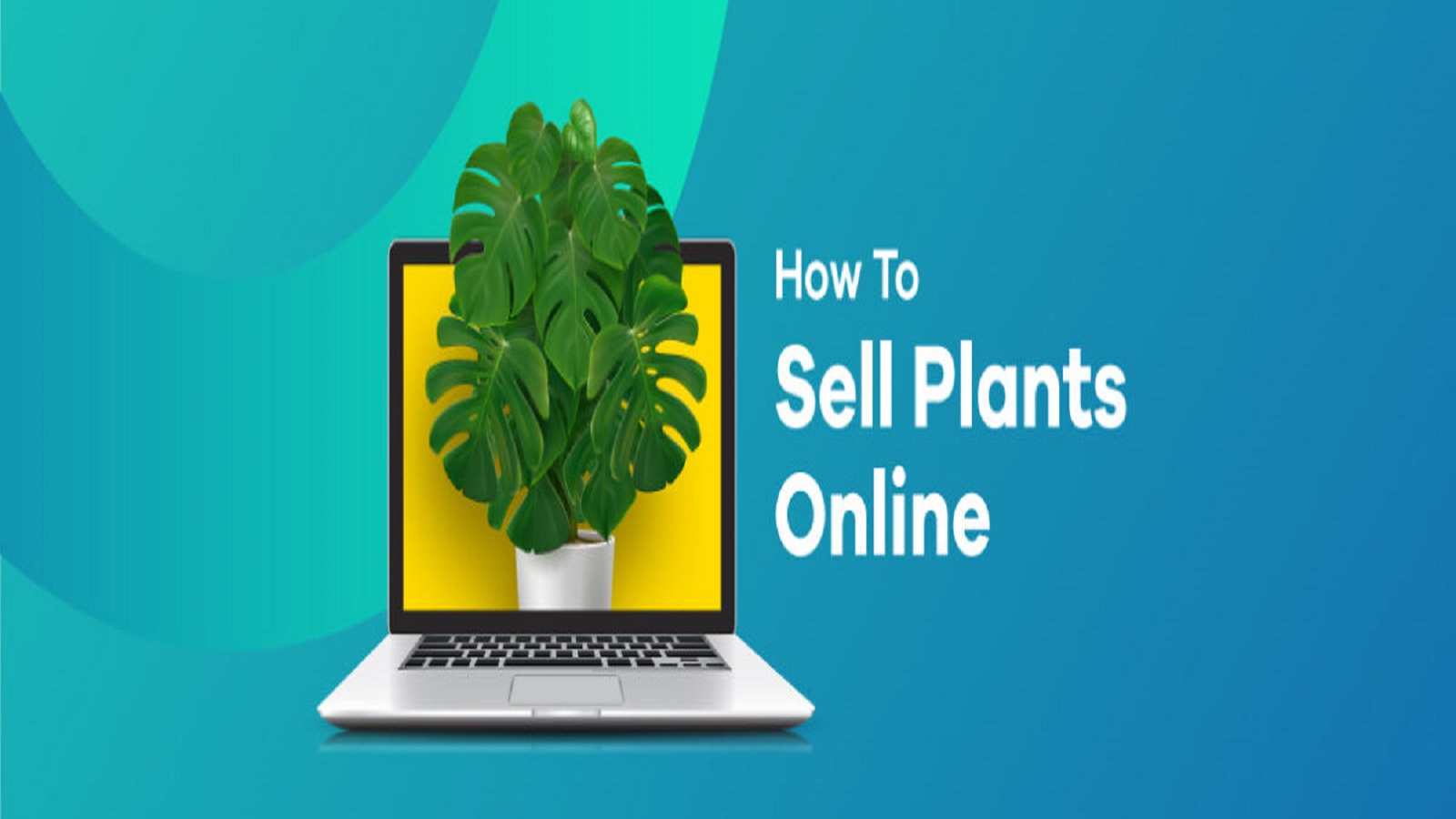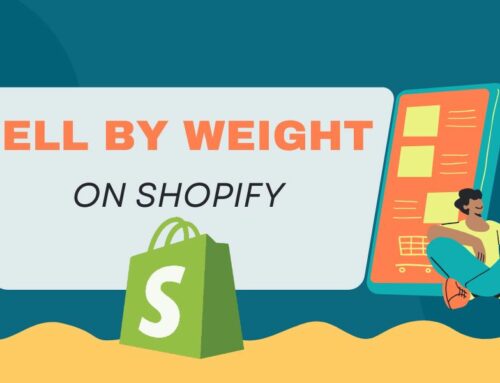The internet has opened a plethora of new opportunities for businesses, including sales of plants online. So, how to sell plants online? In an era when people want and can easily afford to set up their own gardens at home or grow flowers indoors, this business idea has become extremely lucrative. Whether you are a horticulturist by profession or just an amateur looking for ways to monetize your hobby with plants, here are guidelines on how to sell plants online so that it would be profitable. You will get all information you require for running an expanding plant business on the net; from selection of adequate species, store establishment, marketing techniques up until the delivery process.
Now, let’s dive into the green world of online plant sales and discover how you can grow your business from the ground up!
Contents
- 1 How to Sell Plants Online in Easy Steps
- 1.1 Step 1. Identify your niche
- 1.2 Step 2. Select sourcing plants
- 1.3 Step 3. Photography for online plant businesses
- 1.4 Step 4. Showcase your plants
- 1.5 Step 5. Manage inventory and ensure proper plant care
- 1.6 Step 6. Set pricing plants to sell online
- 1.7 Step 7. Start selling plants online
- 1.8 Step 8. Invest in marketing strategy
- 2 Key Considerations Legal when Selling Plants from Home
- 3 How To Sell Plants Online – FAQs
- 4 In Summary
How to Sell Plants Online in Easy Steps
Here’s how to sell plants online with 10 steps. With these steps, you can easily launch an online store to sell plants and boost profits:
Step 1. Identify your niche
Choosing the plants to sell based on your personal preferences and what’s available, the space you have to store and other factors. Below are some plant options for online sales:
- Houseplants: Will you focus on specific types like succulents, cacti or air plants? What can you grow or source wholesale in your area.
- Outdoor plants: Consider the seasonal variations not only in your area but also in your target market. Will your business be seasonal or year round?
- Seeds and bulbs: For example West Coast Seeds ships seeds, bulbs and gardening supplies across Canada not live plants.
- Plant care products: Consider offering soil, fertilizers, growing mediums and grow lights. These can complement live plants and your upsell strategy.
- Home decor: Decorative items like plant pots, trays and hanging planters can be sold on their own or with the plants inside.
- Terrariums and kits: A combination of live plants and the necessary supplies for customers to make their own terrariums at home.
- Plant derived products: Grow your own plants and create products from them. For example the founders of Terre Bleu grow lavender on their farm and sell lavender infused soaps, sprays and salves online.
- Plant subscriptions: Companies like Grounded and Partly Sunny get consistent revenue by offering recurring plant deliveries through subscription services.
- Think outside the box: Why not a service based business that supplies plants for events and corporate clients? Or “plant interior design” a concept Grounded uses for private client consultations. Sonja started her business as a personal plant shopper, doing one on one consultations and buying plants for customers based on their preferences.
>>> You may concern: 14+ Best Products to Sell on Shopify – Top Profitable and Trending Products
Step 2. Select sourcing plants
There are two ways to get the plants for your customers. The first way and the most time consuming is to grow your own plants for sale. This can be done by using your garden, a greenhouse or even renting a space in a community garden. Growing plants requires a lot of knowledge on how to care for different plant species. And how to scale up production if your order volume increases. Do you have the space and condition to grow and maintain plants?

Another way for many sellers is to get plants from greenhouses, nurseries, professional growers and suppliers. You can visit local greenhouses directly or check out nearby companies websites. When looking for the best source of plants consider the following:
- Try out different options: Different suppliers may have different advantages. Some may have lower plant minimums, others may offer additional consulting, support and services.
- Check local nurseries: Local suppliers are often cheaper as they have lower packaging and shipping costs.
- Build relationships: Try to build a good relationship with your supplier. A good relationship can give you better deals in the long run.
- Be seasonal aware: Consider the types of plants that will be available from different suppliers during different seasons. You may need to switch suppliers throughout the year.
- Use multiple sources: Relying on one supplier can be a big problem if issues arise with their products. Using multiple suppliers gives you options and access to more products.
Step 3. Photography for online plant businesses
Product photography is key to grabbing the attention of potential customers especially when selling visually appealing items like plants and flowers. You can hire a professional photographer or go the DIY route with plant photography. Here’s some tips:
- Your product page should have multiple images so customers can see the item from different angles.
- Add close ups to show texture and details.
- Show your product in a contextual setting, also known as a lifestyle shot, to inspire customers on how to style or place the item in their own space. These images are also great for your homepage and social media.
- Consider using 3D photography for your products so customers can use augmented reality to see the item in their space.
- Your phone can take great behind the scenes images, plant care tutorial videos and other social media content.
- When photographing greenery, aim to use natural light to ensure that customers have accurate expectations regarding the plants you offer.
>>> Read more: How to Sell Food Online: A Beginner’s Guide to E-Commerce Success
Step 4. Showcase your plants
Regardless of whether you operate your own ecommerce site, use an online marketplace, or leverage social media, showcasing your plants in an appealing and engaging manner will enhance visibility and boost sales. Consider the following strategies to effectively display your plants online:
- Product Descriptions: Writing good product descriptions is key to marketing your plants. While you need to include the size of the plant and care instructions, this is also an opportunity to talk to your customer on an emotional level and help them see how the plant will look in their home or garden.
Bonus Tip: Add the scientific name, care instructions and specific growing requirements to your product descriptions.

- Organize Your Plants: A categorization system can make the shopping experience so much easier for your customers. Consider adding lots of useful categories like plant type, care requirements, size, color and design style.
- Add a Virtual Tour: A video or virtual tour of your plants can show off their unique features. This is especially useful for online retailers as it allows customers to see the plant’s appearance, dimensions and shape.
Bonus Tip: Don’t forget to feature customer reviews. Motivate customers to share their feedback by offering incentives or discounts on future purchases.
>>> Do you know How to Add Social Media to Shopify?
Step 5. Manage inventory and ensure proper plant care
For any business existing in a plant market, having effective management of stock is crucial. Having a good rapport with reliable suppliers would facilitate future planning. Below are some guiding questions:
- Does your product range change with seasons because of the greenhouse availability?
- Are you thinking about doing a pre-sale for new varieties?
- Should there be an extra safety buffer of stocks to cover possible scarcity or damages?
- What system do you have for caring for your plants while away?
Bonus Tips: Where business may have things coming in and out of stock seasonally, design yourself a system that helps identify and manage such inventories. However, this can be improved by making sure that they maintain a uniform name or number scheme as well as classifying them according to size.
Step 6. Set pricing plants to sell online
Establishing prices for any product, including plants, can pose a challenge for new businesses. Conducting research on competitors to understand the pricing strategies of similar offerings can provide a useful benchmark. Furthermore, it is important to note the basic pricing formula that involves:
- Knowledge of your costs related to goods sold, packaging costs as well as shipping expenses
- Having a slight profit margin
- Adding fixed costs, such as greenhouse rent
- The pricing of plants is dependent on variety of issues. For instance, one of the critical factors is your main customer’s attributes.
- Some sophisticated flower and plant lovers could wish to buy an exceptional plant which has been well taken care of but they might also want to make bulk purchases at cheaper prices.
In addition, other factors must be put into consideration are:
- Seasonality: These particular plants could possibly sell at slightly higher prices if they are provided during the time when there are shortages in market. However, for you to take advantage of seasonality trends; it is very important that you have an uninterrupted supply system comprising diverse products.
- Rarity: Some seeds or plants are much harder to get than others. By understanding which types of plants are very popular among target market will enable you determine appropriate price points.
- Market price: It is important to consider the typical pricing range prevalent in your industry. Even if your brand offers exceptionally high-quality seeds and starter plants, your pricing should remain competitive with what customers can find through other online sources.
>>> Explore: Top 14+ Free eCommerce Platforms to Start Online Businesses
Step 7. Start selling plants online
Starting an online store for the sale of plants involves several steps, such as choosing the right platform, designing an appealing website, and enhancing it for optimal sales performance:
1. Choose a Platform or Online Marketplaces: Shopify, Etsy, AliExpress, …
You can explore more of the top 10 best website builders for small businesses here.
2. Designing Your Online Store
- Plant-Centric Themes: Select themes that incorporate botanical visuals to create a fresh and organic ambiance.
- Add Your Products: Include your products along with detailed descriptions, appropriate categories, and filtering options.
- Mobile Compatibility: Ensure that the theme is optimized for mobile devices, as a significant number of consumers shop using their smartphones.
- User Engagement: Focus on straightforward navigation, quick loading speeds, and a clear layout.
- Main Page: Showcase your best-selling or featured plants, seasonal offers, and unique selling propositions.
Step 8. Invest in marketing strategy
These strategies of online marketing can help sell your plants effectively:
1. Online Store
When you create an online store, it’s your completely an obligation to increase web traffic by yourself. Some effective approaches include:
- Engaging content and social media ads.
- SEO implementation.
- SEM engagement.

2. Marketplace
Selling fees are involved when utilizing marketplaces as they often feature an established audience who use them; however, in order for one not lose customers it is vital to stand out from competition. For this differentiation purpose here come these marketing techniques:
- Sponsored listings
- Promotions and discounts
- Attractive social media content
3. Social Media
Build appealing content that will catch the attention of buyers who visit your page and eventually persuade them into buying the plants from you through social networks. Make sure this active audience visits your website selling plants thereby widening conversion rates for sales purposes.
Bonus Tip: Create educational material and share tips on how to take care of plants. Think about blogging or making videos that give information about different types of plants, their care needs and why people should own them?
Key Considerations Legal when Selling Plants from Home
Whether or not selling plants from home is allowed depends on the individual needs and legislative constraints that exist within a given area. Therefore, it is vital for sellers to investigate extensively before embarking on any form of internet plant marketing so they can comply with the law. Advice from legal professionals or industry associations could provide an invaluable source of information and assistance in dealing with such issues.
Key things to consider:
- Licenses and permits: Depending on where you are, you may need to get specific licenses or permits for online plant sales. These vary depending on the type of plants, volume and where you are and where the buyer is.
- Plant quarantine rules: Many countries and states have rules to prevent the spread of pests, diseases and invasive species through plant movement. Sellers must follow these rules and comply with quarantine laws when shipping plants internationally.
- Labeling and disclosure requirements: Sellers may be required to provide exact and detailed information about the plants they sell, including scientific names, allergens and care instructions. Inaccurate information can put sellers at risk of legal action if a buyer gets hurt or loses money.
- Intellectual property: Sellers must be careful not to infringe on intellectual property, such as trademarks or patents, when selling online. For example using a trademarked plant name without permission can get you in trouble.
- Consumer protection laws: Sellers must comply with consumer protection laws which vary by jurisdiction. These laws cover things like product quality, warranties, refunds and misleading advertising. Sellers must provide accurate product descriptions, ship orders on time and handle customer complaints well.
How To Sell Plants Online – FAQs
1. How do I package plants for shipping?
To package plants for shipping:
- Step 1. Select a box that is rigid.
- Step 2. Get the plant ready by watering it, trimming its leaves, and repotting when needed.
- Step 3. Wrap the roots, pot and leaves properly to safeguard it from any harm.
- Step 4. Use any packing materials available to you to fill up in between spaces with soft cushions so that nothing moves around during transportation.
- Step 5. To glue everything together tightly, get some strong tape and write words like ‘fragile’ on them at clear points wherever possible.
- Step 6. For this purpose of shipping plants, learn about the options available from different carriers including their reliability and safety features before choosing one which has insurance covers too as part of its package deal offer.
2. Which types of plants are suitable for selling from a home-based business?
If you reside in an area with ideal conditions for plant cultivation, you have the potential to sell a wide range of plants from your home. You can start with resilient and compact varieties, such as succulents. These plants are not only easy to package but also require minimal maintenance.
3. What platform is best for selling plants online?
Here are a few popular platforms for selling plants online:
- Etsy: Popular among hand-made and antiques products, best option for peculiar kinds or exclusive plants.
- Ebay: A flexible forum hosting a diversity of products that consists of plants.
- Amazon: A huge online buyer whose market consists of a large number of customers.
- Facebook Marketplace :An alternative at no cost targeting your locale buyers and sellers
- Instagram :can be used to display the plants and cause sales by clicking your link embedded in the profile or shoppable posts.
- Shopify: An avenue to create your own online shop thus giving you full control over the brand as well as items that are in stock.
In Summary
While plants may not be the most sought-after products for online sales, they do have a good number of loyal customers and by selling them where there is demand, you can make big money out of these products. Plants also relieve stress and increase productivity and that is why they can help with start-up business pressures. Besides, more and more people are getting interested in keeping plants so this is the right time to grow your plant business.
Hope that these suggestions about how to sell plants online are helpful for you! Thanks for reading!




